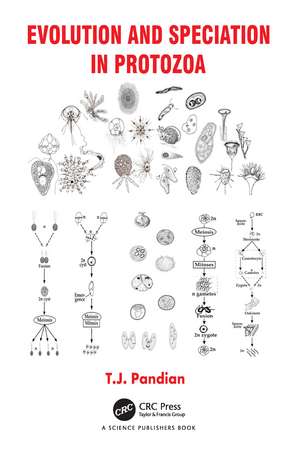Evolution and Speciation in Protozoa
Autor T.J. Pandianen Limba Engleză Paperback – 8 oct 2024
| Toate formatele și edițiile | Preț | Express |
|---|---|---|
| Paperback (1) | 485.24 lei 6-8 săpt. | |
| Science Press – 8 oct 2024 | 485.24 lei 6-8 săpt. | |
| Hardback (1) | 891.22 lei 6-8 săpt. | |
| Science Press – 24 feb 2023 | 891.22 lei 6-8 săpt. |
Preț: 485.24 lei
Nou
Puncte Express: 728
Preț estimativ în valută:
92.85€ • 101.17$ • 78.24£
92.85€ • 101.17$ • 78.24£
Carte tipărită la comandă
Livrare economică 23 aprilie-07 mai
Preluare comenzi: 021 569.72.76
Specificații
ISBN-13: 9781032347561
ISBN-10: 1032347562
Pagini: 194
Ilustrații: 114
Dimensiuni: 156 x 234 mm
Greutate: 0.36 kg
Ediția:1
Editura: Science Press
Colecția CRC Press
ISBN-10: 1032347562
Pagini: 194
Ilustrații: 114
Dimensiuni: 156 x 234 mm
Greutate: 0.36 kg
Ediția:1
Editura: Science Press
Colecția CRC Press
Public țintă
AcademicNotă biografică
Recipient of the S.S. Bhatnagar Prize, the highest Indian award for scientists, one of the ten National Professorships, T.J. Pandian has served as editor/member of editorial boards of many international journals. His books on Animal Energetics (Academic Press) identify him as a prolific but precise writer. His five volumes on Sexuality, Sex Determination and Differentiation in Fishes, published by CRC Press, are ranked with five stars. He has authored a multi-volume series on Reproduction and Development of Aquatic Invertebrates, of which the volumes on Crustacea, Mollusca, Echinodermata and Prochordata, Annelida, Platyhelminthes and Minor Phyla have been published. The CRC Press has recently published his new book series on Evolution and Speciation in Animals and Evolution and Speciation in Plants. The third volume on Evolution and Speciation in Protozoa is in your hands.
Cuprins
1. General Introduction 2. Spatial Distribution 3. Acquisition of Nutrients and Food 4. Commensals—Symbionts–Parasites 5. Sexual Reproduction 6. Clonal Multiplication—Regeneration 7. Gametogenesis 8. Induction and Morphogenesis 9. Diversity: Symmetry-Sexuality-Motility 10. Past: Emergence of Protozoa 11. Present: Conservation and Dormancy 12. Future: Climate Change 13. References
Descriere
The polyphyletic Protozoa have explored the possibility of performing almost all metazoan functions with a few subcellular organelles.
